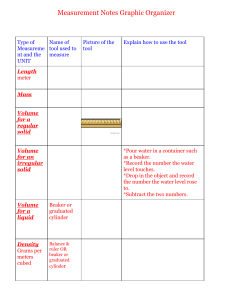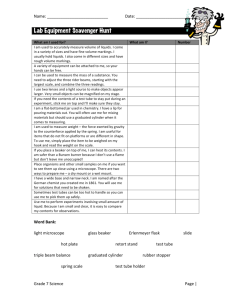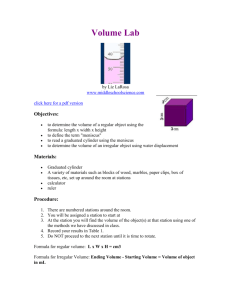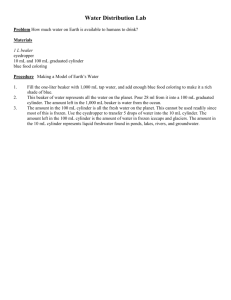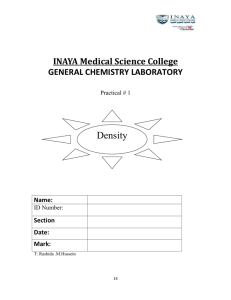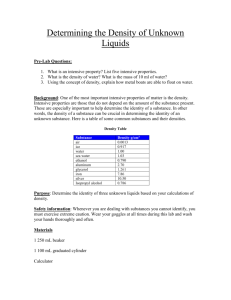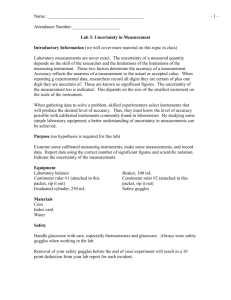Measurements and Calculations Laboratory Activity
advertisement
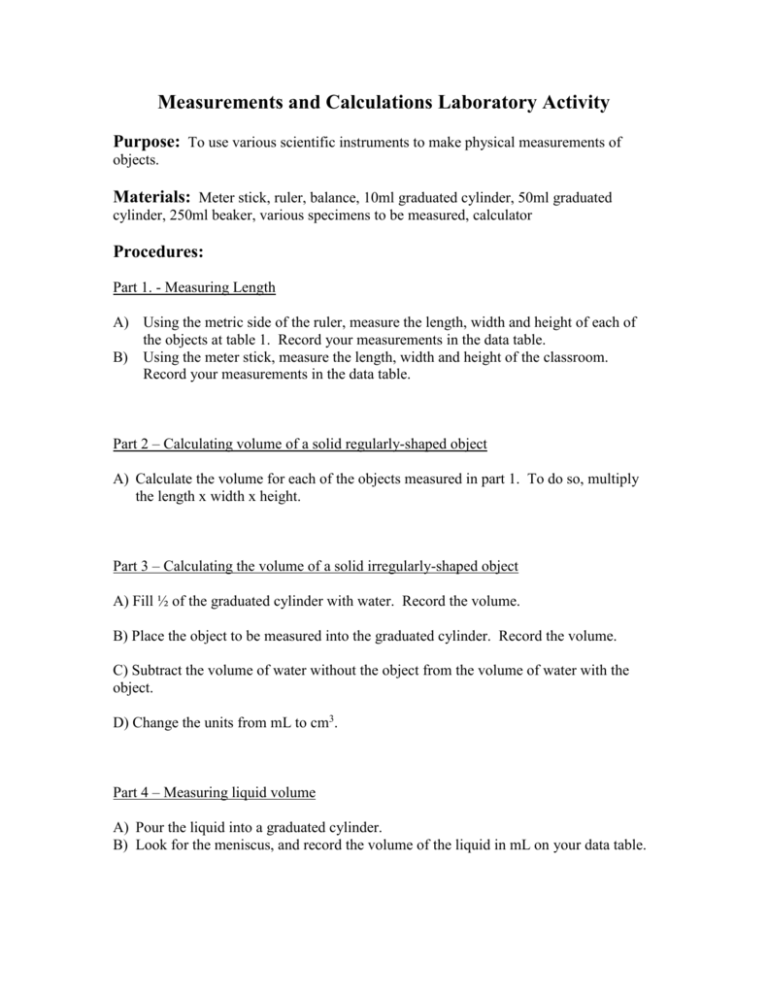
Measurements and Calculations Laboratory Activity Purpose: To use various scientific instruments to make physical measurements of objects. Materials: Meter stick, ruler, balance, 10ml graduated cylinder, 50ml graduated cylinder, 250ml beaker, various specimens to be measured, calculator Procedures: Part 1. - Measuring Length A) Using the metric side of the ruler, measure the length, width and height of each of the objects at table 1. Record your measurements in the data table. B) Using the meter stick, measure the length, width and height of the classroom. Record your measurements in the data table. Part 2 – Calculating volume of a solid regularly-shaped object A) Calculate the volume for each of the objects measured in part 1. To do so, multiply the length x width x height. Part 3 – Calculating the volume of a solid irregularly-shaped object A) Fill ½ of the graduated cylinder with water. Record the volume. B) Place the object to be measured into the graduated cylinder. Record the volume. C) Subtract the volume of water without the object from the volume of water with the object. D) Change the units from mL to cm3. Part 4 – Measuring liquid volume A) Pour the liquid into a graduated cylinder. B) Look for the meniscus, and record the volume of the liquid in mL on your data table. Part 5. – Measuring mass of a solid A) Be sure your balance is plugged in and turned on. B) Hit the “tare” button to zero the balance. C) Determine the mass of each of the objects from table 2. Record your measurements in the data table. Part 6 – Measuring the mass of a liquid A) Weigh a clean, dry beaker. Record its mass. B) Pour the liquid into the beaker, and record the mass of the beaker and the liquid. C) Subtract the mass of the beaker without the liquid from the mass of the beaker with the liquid. D) Record the mass of the liquid alone on your data table in mL. Part 7 – Calculating density A) Divide the mass of the object/liquid by the volume. B) Record the volume as g/cm3 for a solid, g/mL for a liquid.
